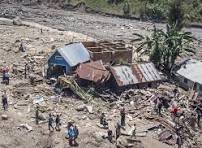Leading insurance and reinsurance broker, Aon, has disclosed that global insured losses in 2023 surged to $118 billion, representing the fourth consecutive year that insurance losses have exceeded the 21st-century average, reflecting the increasing impact of natural disasters on the global economy.
The insurance brokerage firm, which gave the figures in its recently published ‘2024 Climate and Catastrophe Insight’ report disclosed that insurance losses during the year soared to 31%, surpassing $100 billion for the fourth consecutive year.
A news report from Reinsurance News, an industry-focused online medium, indicated that Aon pegged economic losses from nat cats at $380 billion from 398 events, a 22% increase above the 21st-century average, leaving a protection gap of 69%.
While stressing the urgent need to expand insurance coverage globally, the brokerage firm attributed the rise in nat cats losses primarily to significant earthquakes and relentless severe convective storms (SCS) in the United States and Europe.
According to the report, the number of large-loss natural hazard events reached unprecedented levels in 2023, with 66 billion-dollar economic loss events and 37 billion-dollar insured loss events.
Aon further disclosed that natural hazards in 2023, particularly earthquakes and heat waves, led to the tragic loss of 95,000 lives globally, the highest number since 2010 as 2023 emerged as the hottest year on record, with ‘unprecedented temperature anomalies,’ affecting 24 countries and territories.
Commenting on the report’s findings, CEO of Aon, Greg Case, harped on the need for organisations to enhance resilience in the face of increasing climate and catastrophe risks.
The insurance expert also canvassed the need for collaborative efforts across the private and public sectors to accelerate innovation, protect vulnerable communities, and address the economic impacts of extreme weather.
In his remarks, CEO of Risk Capital and CEO of Reinsurance at Aon, Andy Marcell, stressed the importance of utilising forward-looking diagnostics to analyse climate trends and mitigate risks, particularly in sectors such as construction, agriculture, and real estate. The insurance industry was identified as playing a critical role in improving the financial resilience of communities and bridging the protection gap with innovative products.
This is even as the Head of Catastrophe Insight at Aon, Michal Lörinc, underscored the vulnerabilities of different communities to disasters and cited examples such as earthquakes revealing underinsurance issues and the necessity for proper infrastructure maintenance and reliable warning systems in the face of deadly floods and fires.






